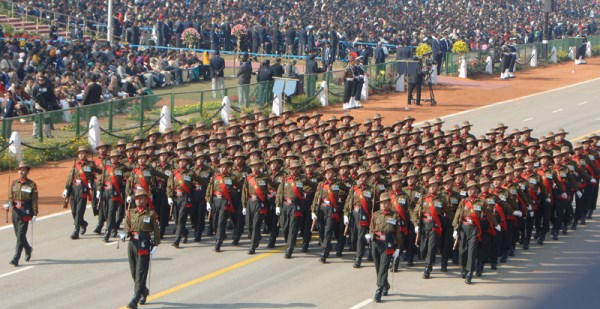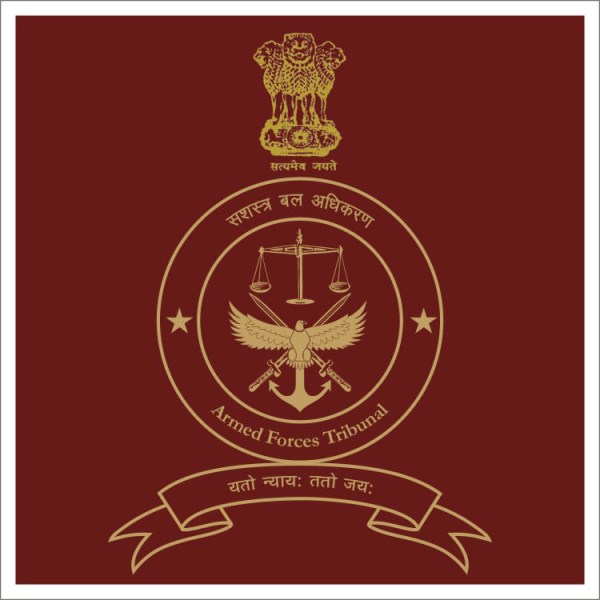The Defence Minister A.K. Antony has referred the rank pay issue to the Attorney General, with the armed forces getting an opportunity to brief the AG on their interpretation of the orders issued by the Supreme Court last year, currently disputed by the defence ministry.
But this reference will not necessarily lead to a resolution of the issue, since similar measures taken earlier have failed to reach equitable conclusions.
For instance, in March of 2012, the defence minister had asked the Army and the Ministry to submit to the Solicitor General their respective views on a disability and war injury pensions issue arising from the judgment in the case of former Vice Chief of the Army, Lieutenant General Vijay Oberoi, and directed the ministry not to file appeals before the Supreme Court in similar cases till the time the Solicitor General gave his opinion and the defence minister took a final decision.

Here’s what happened. Firstly of all, the ministry continued to file appeals despite the minister’s directions.
Secondly, the ministry asked the Army to ‘change’ the brief it had prepared for the Solicitor General.
And then the ministry made its own notes by subsuming and suppressing the analysis of the Army.
Finally, the Army was ultimately never provided a chance to present its views to the Solicitor General, allowing the Ministry to obtain an opinion that opposed the interests of disabled veterans.
And By The Way...
This is notwithstanding that the Solicitor General should have excused himself from giving an opinion on this issue because of a possible conflict of interest, since he had himself personally appeared against disabled soldiers on the same issue before the Supreme Court, representing the defence ministry.
As to rank pay, the issue was decided by the Supreme Court in March of 2010 in favour of commissioned officers of the three services, ruling that ‘rank pay’ was not to be deducted while fixing the salaries of defence officers.
What is Rank Pay?
For those who come in late, a running pay-scale was introduced for commissioned ranks from Second Lieutenant to Brigadier (and equivalent) by the 4th Pay Commission to which a rank pay ranging between Rs 400 to 1200 was to be added for Captains, Majors, Lieutenant Colonels, Colonels and Brigadiers.
The notification in question stated that said ‘rank pay’ would be a part of ‘basic pay’ for all intents and purposes. Still however, while fixing the pay scales, the Ministry of Defence had deducted ‘rank pay’ from the ‘basic pay’ thereby resulting in damage to finances and the pay grades of military officers.
The thing is, basic pay is generally dependent on length of service. And a Colonel and Brigadier could easily end up (for example) with the same length of service. So this was also a measure to distinguish rank on the basis of pay grade.
Evidently aware that their stand since the 4th Pay Commission was no longer sustainable after the Supreme Court verdict, the defence ministry set up a committee to figure out the financial implications of the judgement, and then, in an unprecedented move, approached the Court asking it to take back its own order and hear the issue again.
This was not a request the Court was ready to accept and it ruled on the issue in September, 2012.
The defence ministry argued that implementation of the judgment would require rehashing of not only the 4th Pay Commission scales but also the scales devised by the 5th and 6th Pay Commissions. The ministry also said this would alter the payment of all consequential benefits to officers and their families, as well as, affect the benefits of officers who had retired prior to 1986.
But this was a given, considering the deduction of rank pay from 4th Pay Commission scales and beyond had been declared illegal. And as a result, the pay-scales needed to be upgraded through the three pay commissions leading to enhancement of the pay and status of defence officers.
The defence ministry was now left with no option but to implement the judgment. But they decided to play games with it, again, when they issued their implementation letter in December 2012.
Here’s what the ministry said in the letter, purportedly to implement the Supreme Court judgment:
….and to re-fix the initial pay of the concerned officers of the Army, Navy and Air Force in the revised scale (integrated scale) as on 01-01-1986 as per Para 6 of those instructions without deduction of rank pay appropriate to the rank held by the officer on 01st January 1986….
For those not in a terrible hurry to read the entire Supreme Court judgment and compare it with the language above, here’s what ministry did.
It changed the language used by the Court in its judgment, when it issued this letter.
While the Court had ordered re-fixation of pay ‘with effect from 01-01-1986′, the Ministry’s letter grants it to officers ‘as on 01-01-1986′.
This subtle variation makes all the difference.
The judgement which was to have a cascading effect on pay-scales after 01-01-1986 with effect from the 4th Pay Commission, continuing till date, now effectively applied only to those persons who were already receiving rank pay as on 01-01-1986.
The letter also states that no changes would be made in the instructions issued after the 5th and 6th Pay Commissions except to the extent of re-fixation necessitated due to fixation as on 01 Jan 1986.
This simply meant that there would be no upgrade of scales or change in the implementation instructions except that, for those affected officers as on 01 Jan 1986 who remained in service as on 01 Jan 1996 or 01 Jan 2006, their re-fixation within the existing tables based on the fitment formula would be affected while switching over from 4th Pay Commission to 5th Pay Commission and then from 5th Pay Commission to 6th Pay Commission tables, but within the same scales.
This was nothing more than a natural consequence of the stipulation of fixation as on 01 Jan 1986.
With a dry, half-hearted implementation letter, the defence ministry not only ignored the spirit and the character of the judgement but also its own commitment before the Supreme Court. The ministry has also tried to tacitly impose litigation on affected officers to get similar exactly parallel anomalies of the successive pay commissions corrected.
But no change in pay scale, status or even the scales after the 4th, 5th and 6th Pay Commissions has been notified.
Clearly, getting the intentional anomaly rectified is a tough call since it involves not only the correction of the scales but also the restoration of the status of defence officers which has been on a constant downward slide after the 4th Pay Commission.
Downgrade of military ranks
While the rank of Captain had been shown equivalent to Senior Time Scale (Under Secretary to Govt of India) of the civil services till the 3rd Pay Commission, it was suddenly shown below this civilian counterpart with effect from 01 Jan 1986 after the 4th Pay Commission, when the concept of rank pay was introduced since it was deducted from the basic pay.
And while there was no 4th Pay Commission recommendation or government order downgrading the rank of Captain (and subsequent ranks), this downgrade was surgically performed in a vacuum without official sanction, without authority and it continues till date.
The problem also remains that the defence services, especially till the last Pay Commission, were guilty of a failure to appreciate the impact of the actions of the bureaucracy affecting them. Some serving officers also never had the foresight to analyse how such issues would affect future generations as well as retirees, which would someday include their own selves.
The ministry leadership appears to be overly reliant on the diligence of its junior bureaucracy and the Defense Accounts Department, which portrays an attitude of opposition to military pay upgrades. For instance, most of the letters issued in pay and pension matters by the defence ministry are drafted by the office of the Controller General of Defence Accounts, including the letter issued on the rank pay issue.
It might not be politically correct to say this, but to get anything fair out of the bureaucratic retinue in the defence ministry, the armed forces need to be smarter and more artful in their pursuit of this issue. Serving officers need to remember that they too will be veterans one day and their interests are common to them.
Courtesy: StratPost
Author: Major Navdeep Singh
Major Navdeep Singh is a practicing Advocate in the Punjab & Haryana High Court and the Armed Forces Tribunal. He was also the founding President of the Armed Forces Tribunal Bar Association. He writes extensively at IndianMilitary.info and tweets under the handle @SinghNavdeep.



